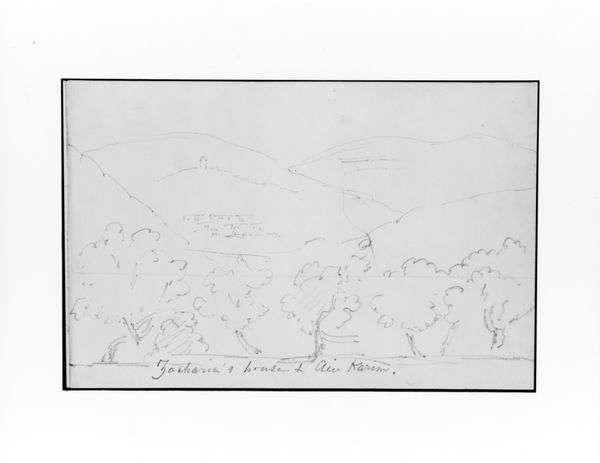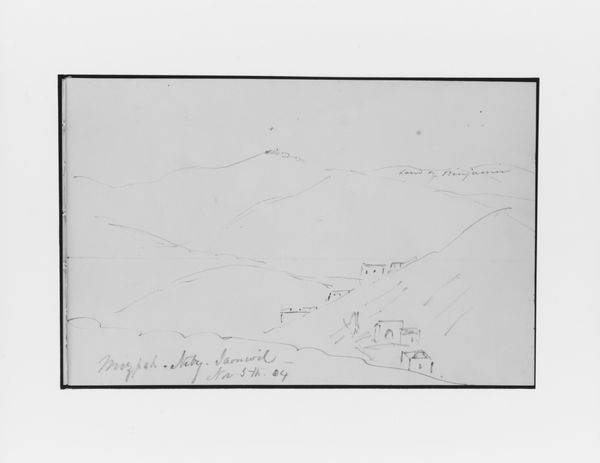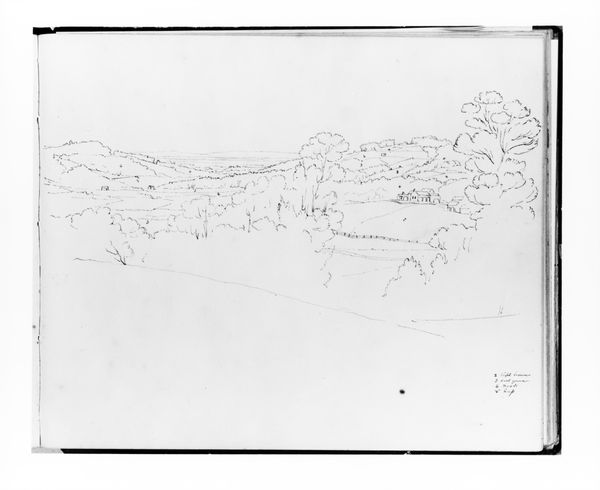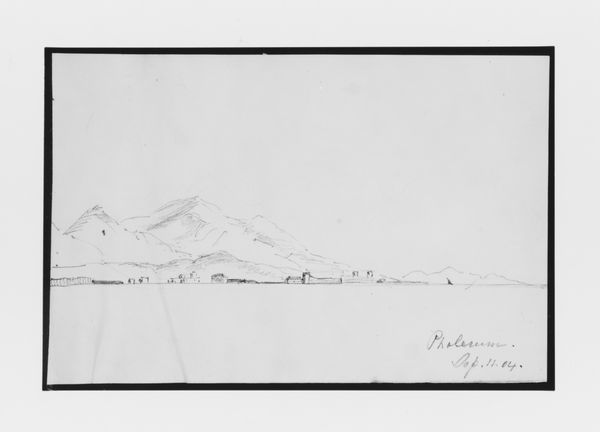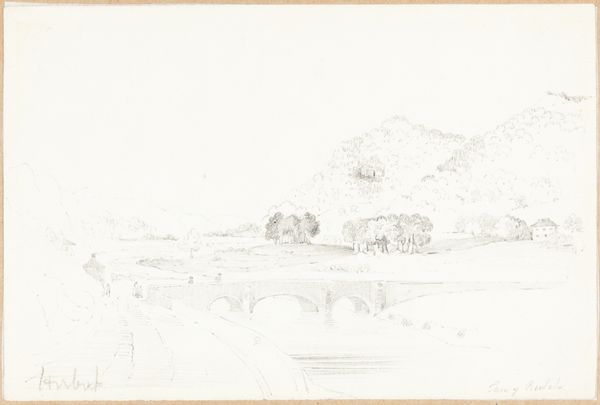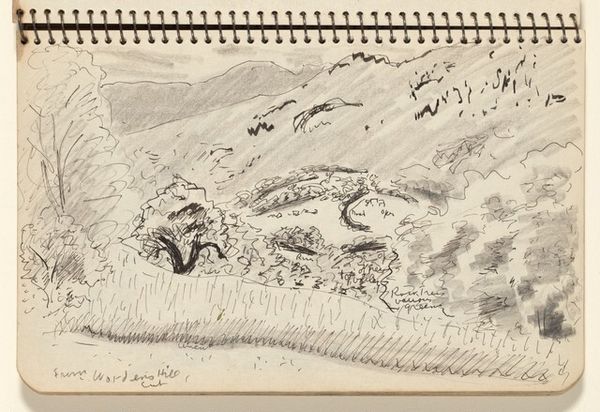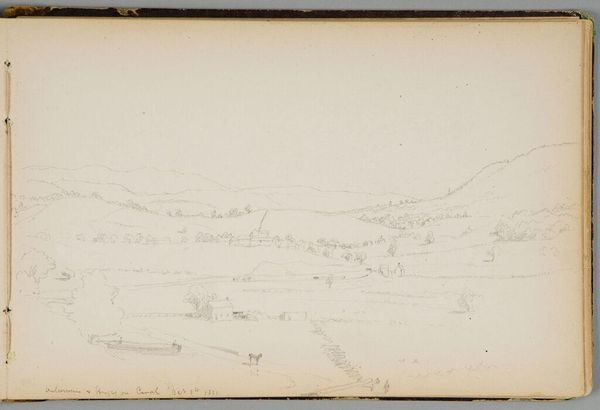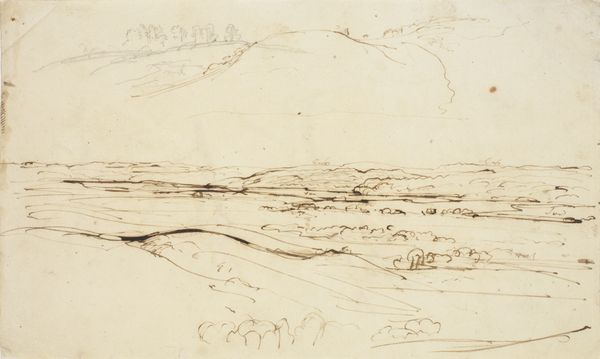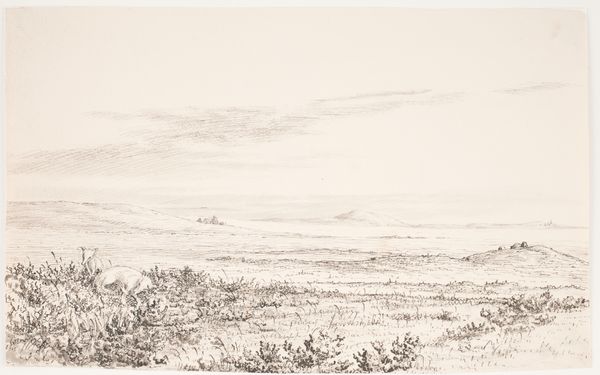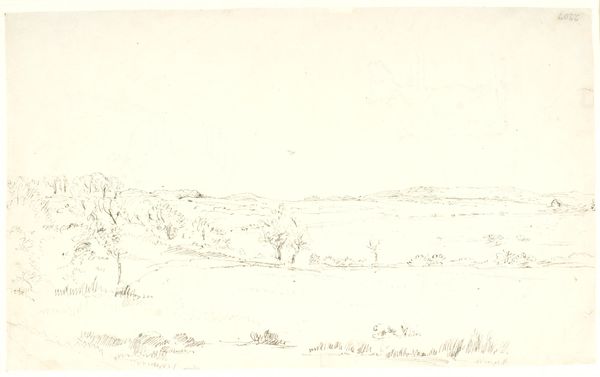
Dimensions: 5 1/4 x 8 1/4 in. (13.3 x 21 cm)
Copyright: Public Domain
Curator: Mary Newbold Sargent created this work, "Geth-Lafa (from Sketchbook)," in 1904 using pencil on paper. It's currently part of the Metropolitan Museum of Art's collection. Editor: My immediate impression is of quiet simplicity, an intimate glimpse into a landscape sketched with delicate lines. The limited use of pencil creates a dreamy, almost ethereal mood. Curator: The work certainly reflects Sargent’s engagement with plein-air drawing practices prevalent at the time. Think about the social context; travel was opening up new vistas, and artists documented these experiences in portable formats like sketchbooks. The very act of drawing on-site, capturing the immediacy of a place, became valuable. Editor: Right, it speaks volumes about the changing dynamics of artistic production and consumption. The "sketchbook" format itself signals accessibility, differing significantly from formally commissioned works displayed in established institutions. I wonder if the artist was focused on the craft—choosing pencil and paper for convenience, portability, and availability, rather than aiming for grand artistic expression. Curator: It also begs the question of artistic intentions. Was this for private reflection, or was there a purpose of display or future exhibitions? Consider how this image could have served her engagement with larger cultural themes or political landscapes. This sketch becomes a kind of social document reflecting Sargent’s position as an artist experiencing and recording different environments. Editor: Indeed, this makes you question whether she ever saw this art in gallery and her goal when constructing these landscape impressions with limited materials, even its destination within elite and popular spheres of travel and art collecting. It brings up interesting questions around labor, both the artist's hand and the accessibility and commodification of portable landscapes through readily available drawing implements. Curator: Examining this piece encourages us to reconsider art historical narratives. Instead of solely focusing on masterpieces in grand halls, we can also appreciate art's relationship to production and its role as a means of experiencing and interpreting our world. Editor: Exactly! A glimpse into artistic experience, material considerations, and a portable world. It helps us appreciate this piece through a renewed lens and understand the historical context and making of this art and it's location within the historical narratives of the Metropolitan Museum of Art.
Comments
No comments
Be the first to comment and join the conversation on the ultimate creative platform.
